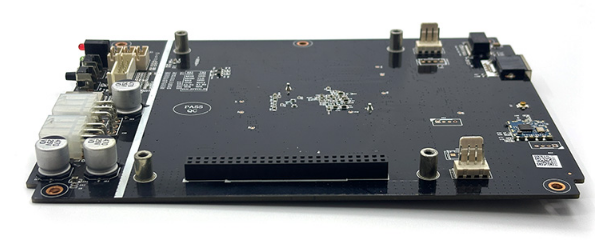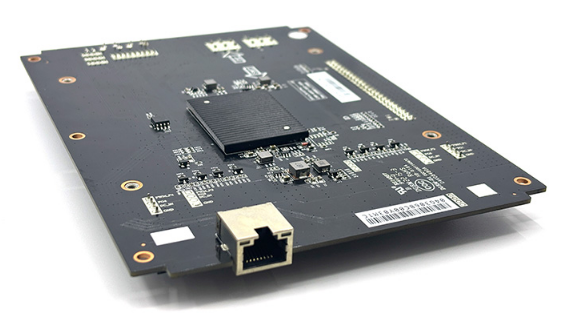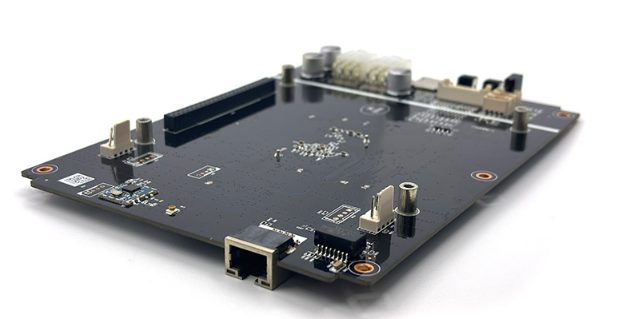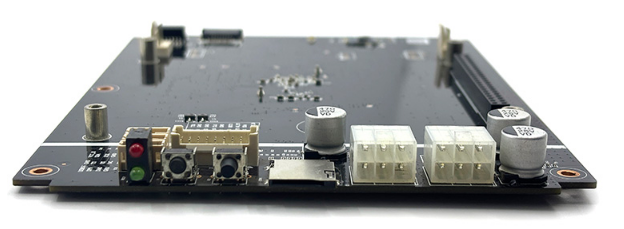How to check the health of iPollo V1 mini control board during mining operations?
April 28, 2025
How to Check the Health of iPollo V1 Mini Control Board During Mining Operations?
Cryptocurrency mining is a complex, resource-intensive process that relies heavily on the performance and reliability of its hardware components. Among these components, the control board plays a pivotal role in ensuring the smooth operation of mining rigs. The iPollo V1 mini control board stands out as a cutting-edge solution designed specifically for optimized Ethash algorithm performance. However, like any critical piece of hardware, it requires regular monitoring and maintenance to ensure it operates at peak efficiency. In this article, we’ll explore how to effectively check the health of your iPollo V1 mini control board during mining operations, ensuring uninterrupted productivity and maximizing your return on investment.
The iPollo V1 Mini Control Board: A Brief Overview
Before diving into health-check procedures, it’s essential to understand the core features and advantages of the iPollo V1 mini control board. This component serves as the central hub of your mining rig, managing data flow between hash boards and ensuring efficient processing of mining tasks. Here’s a quick recap of its standout features:

- Data Processing Excellence: Advanced data collection and processing capabilities enable seamless communication between hash boards, preventing bottlenecks and revenue loss due to data transmission issues.
- Optimized Memory Architecture: With 6.0GB memory and support for a 5.8GB DAG size, the iPollo V1 is tailored for current and future Ethereum mining requirements.
- Performance Reliability: It delivers a consistent hashrate of 280MH/s (±10%), ensuring stable and predictable mining output.
- Energy-Efficient Design: Operating at just 220W (±10%), the board optimizes power consumption without compromising performance.
- Compact and Versatile: Weighing only 0.5 KG and featuring WiFi connectivity, the iPollo V1 is easy to integrate into existing setups while maintaining industrial-grade reliability.
Understanding these features is crucial because they directly influence the methods and tools you’ll use to monitor the board’s health.
Why Regular Health Checks Are Essential
Mining operations are inherently demanding, subjecting hardware to constant stress and high workloads. Over time, components can degrade, leading to reduced efficiency or even complete failure. For the iPollo V1 mini control board, regular health checks are vital for several reasons:

- Preventing Downtime: A failing control board can bring your entire mining operation to a halt, resulting in significant revenue loss.
- Maximizing Efficiency: Monitoring ensures the board operates within optimal parameters, maintaining high hashrates and low power consumption.
- Extending Lifespan: Early detection of issues allows for timely maintenance, prolonging the board’s operational life.
- Ensuring Data Integrity: The board’s role in data processing means any malfunction could lead to incomplete or corrupted data, affecting mining results.
By incorporating regular health checks into your routine, you can mitigate these risks and keep your mining operation running smoothly.

How to Check the Health of Your iPollo V1 Mini Control Board
1. Monitor Temperature Levels
Overheating is one of the most common issues affecting mining hardware. The iPollo V1 mini control board, while designed for efficiency, is not immune to temperature-related stress. Use monitoring software to track the board’s temperature in real-time. Ideal operating temperatures typically range between 40°C and 70°C. If temperatures exceed this range, consider improving ventilation, reducing ambient room temperature, or checking for dust buildup that might hinder cooling.
2. Track Hashrate Performance
The iPollo V1 is designed to deliver a consistent hashrate of 280MH/s (±10%). Any significant deviation from this benchmark could indicate an issue. Use mining software to monitor hashrate performance over time. Sudden drops or erratic fluctuations may point to problems such as hardware malfunctions, connectivity issues, or inadequate power supply.
3. Analyze Power Consumption
Efficient power usage is one of the iPollo V1’s key advantages. Regularly check the board’s power consumption to ensure it remains within the expected range of 220W (±10%). Higher-than-normal power draw could signal inefficiencies or underlying hardware issues, while lower power consumption might indicate reduced performance.
4. Check for Error Messages
Most mining software provides logs or alerts for hardware errors. Review these logs regularly to identify any issues with the control board. Common error messages might include connectivity failures, data transmission errors, or hardware malfunctions. Addressing these errors promptly can prevent more severe problems down the line.
5. Inspect Physical Components
While software monitoring is essential, don’t overlook the importance of a physical inspection. Periodically check the control board for signs of wear and tear, such as burnt components, loose connections, or damaged cables. Ensure the board is securely mounted and free from dust or debris that could affect its performance.
6. Test Connectivity
The iPollo V1’s WiFi connectivity is a key feature that enables flexible deployment. Regularly test the board’s connection to your network to ensure stable and reliable communication with other components. Intermittent connectivity issues can disrupt data flow and reduce mining efficiency.
7. Update Firmware
Manufacturers often release firmware updates to improve performance, fix bugs, and add new features. Keep your iPollo V1 mini control board up to date by checking for and installing firmware updates as they become available. This proactive approach can enhance both performance and reliability.
Tools and Software for Monitoring
To effectively monitor the health of your iPollo V1 mini control board, you’ll need the right tools and software. Here are some recommendations:

- Mining Software: Programs like Hive OS, MinerStat, or Awesome Miner provide comprehensive monitoring capabilities, including hashrate tracking, temperature monitoring, and error logging.
- Temperature Sensors: External temperature sensors can provide additional data points for monitoring the board’s thermal performance.
- Power Meters: Use a power meter to measure the board’s energy consumption and ensure it remains within the expected range.
- Network Testing Tools: Tools like Ping or network analyzers can help diagnose connectivity issues.
Practical Tips for Maintaining Optimal Performance
In addition to regular health checks, consider these best practices to keep your iPollo V1 mini control board performing at its best:
- Maintain a Clean Environment: Dust and debris can accumulate on hardware components, leading to overheating and reduced efficiency. Clean your mining rig and its surroundings regularly.
- Ensure Adequate Cooling: Proper ventilation and cooling are essential for maintaining optimal temperatures. Consider using additional fans or liquid cooling systems if necessary.
- Use a Stable Power Supply: Fluctuations in power supply can damage hardware and reduce performance. Invest in a high-quality PSU and consider using a surge protector or uninterruptible power supply (UPS).
- Schedule Regular Maintenance: Incorporate regular maintenance into your routine to address potential issues before they escalate.
Conclusion
The iPollo V1 mini control board is a powerful and efficient component that plays a crucial role in your mining operation’s success. By regularly monitoring its health and addressing any issues promptly, you can ensure consistent performance, minimize downtime, and maximize your mining profitability. Whether you’re tracking temperature levels, analyzing power consumption, or inspecting physical components, these proactive measures will help you get the most out of your iPollo V1 mini control board.
Remember, in the world of cryptocurrency mining, staying ahead of potential problems is key to maintaining a competitive edge. By incorporating these health-check practices into your routine, you’ll be well-equipped to keep your mining operation running smoothly and efficiently.